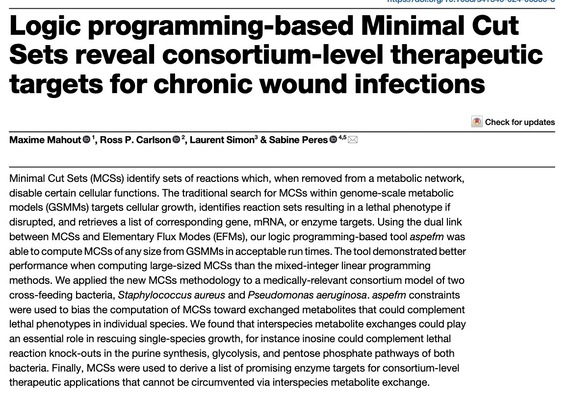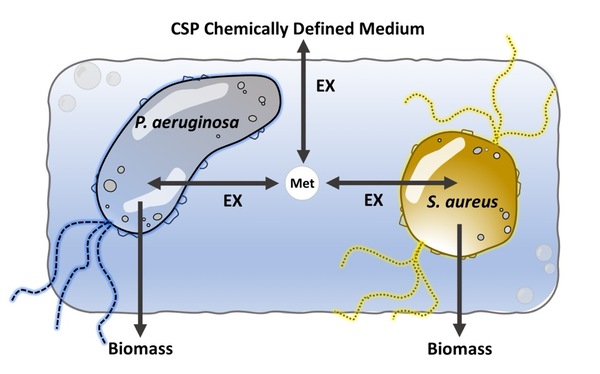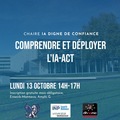
We are very pleased to announce the final acceptance (and publication) of an article in Nature npj Systems Biology and Applications on the thesis work of Maxime Mahout (I talk a bit more about his thesis and Maxime’s thesis defense here).
Congratulations to Maxime for successfully publishing his work in a journal of this stature. I have followed his work since his master’s and the idea developed in this article from the beginning (with Sabine Pérès). We have benefited from the modeling work of biologists, making cellular mechanisms accessible through logic (or in the form of graphs). This allows reasoning about the processes at play in cells, considered as metabolite factories, producing proteins from clearly defined chemical rules. Once this modeling is done, many problems can be formulated in logical terms (for example, which gene to deactivate to prevent the cell from producing a specific enzyme while retaining its beneficial properties?), thus opening up new possibilities for analysis.
 An illustration of P. aeruginosa and S. aureus bacteria, which, when collaborating, become extremely difficult to combat
An illustration of P. aeruginosa and S. aureus bacteria, which, when collaborating, become extremely difficult to combat
In this work, the idea is to analyze a consortium of bacteria that, when together, is almost impossible to cure (whereas alone it is much simpler). We have thus proposed to analyze the consortium as a whole to identify what could make it stronger. Maxime even proposes possible treatment avenues in this work.
Congratulations again to the whole team!




